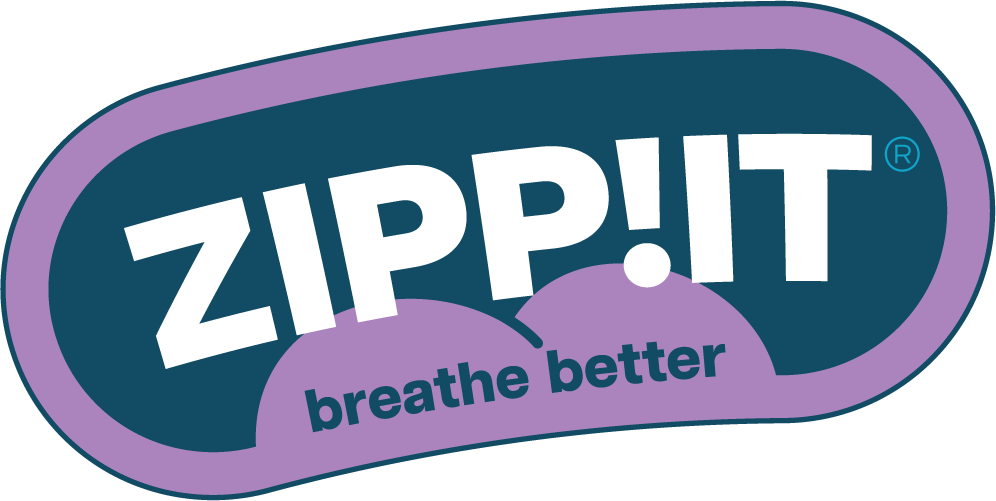What are nose strips? And why use them?
Nose strips are an innovative way to make it easier for people to breathe through the nose.
Whether you want to combat snoring, a stuffy nose, or simply want to get more oxygen into your body when exercising or sleeping, nose strips are the perfect solution.
Thin and lightweight, yet strong enough to open the nasal passage, nose strips are becoming one of the most popular ways to prevent snoring and boost oxygen intake.

What are nose strips and how do they work?
The nose strip is placed over the top of the nose and sticks in place, instantly making the nostrils wider and boosting airflow.
It can hold your nose open all night long to allow better nasal breathing, which is often the cause of sleepless nights.
The Sleep Foundation found that although it is not a cure for sleep disorders like sleep apnea, they can help those who have restless sleep caused by breathing issues.
Not only do breathing problems lead to a poor quality of sleep for the sufferer, but anybody sharing a bed with them also has their sleep patterns disturbed with loud, nasal snoring.
There are lots of bulky, expensive gadgets such as CPAP machines to prevent conditions like sleep apnea.
But, let’s face it, nobody wants to sleep with a full-face breathing mask strapped to their head every night!
CPAP machines do serve a special purpose and are recommended by doctors for many conditions such as severe sleep apnea, so you should always consult a health professional first before switching your CPAP for nose strips.
Nose strips, in comparison, can be a much more cost-effective solution that are specially designed to improve nasal breathing.
It couldn’t be easier to use nose strips, and there are lots of benefits of using them.
Top 5 nose strips benefits
Nose strips can be used for a variety of reasons, from helping with snoring issues to boosting athletic performance.
Let’s take a look at the top benefits of using nose strips.

-
Better airflow
As nose strips are physically attached to either side of the nose, they gently pull open the nostrils and allow for a greater volume of air to flow through them. If you’re suffering from a cold or other type of nasal congestion, this enhanced airflow brings greater relief.
-
Reduces snoring
One of the main causes of snoring is the nasal passageway being obstructed. As the air struggles to move through the nose, it creates a roaring sound on both the inhale and the exhale. Snoring can be so loud that it wakes the snorer up, as well as anyone nearby.
-
Improves quality of sleep
When we sleep, our body goes into relaxation mode, which also means that the muscles in the face become relaxed too and the nasal passageway can become blocked. Breathing through the nose has lots of benefits, and can help you get a better night’s sleep.
-
No medical intervention
As nose strips can be used by anyone, it avoids the need for specialist medical treatment. You don’t need to put any kind of nasal spray inside your nostrils, wear a breathing mask, or take any kind of tablets. Simply apply the nose strip and breathe easily.
-
Enhanced athletic performance
Nose strips improve airflow, making breathing easier and allowing you to use energy more efficiently. This can help control your breathing better and reduce fatigue, especially in endurance sports. While they do not provide an immediate performance boost, they can provide a more comfortable and even breathing rhythm.
As you can see, just by opening the airway passage more with a single nose strip, it’s possible to reap lots of great benefits.
What does the science say?
There are lots of anti-snoring products on the market that claim to give a better night’s sleep.
From wrist devices that give you a small electric shock to devices that have to be strapped to the face, there are endless anti-snoring gimmicks.
Nose strips, however, have a measurable effect when it comes to helping people breathe better, and it’s been studied numerous times.
A 2018 study showed that there was a ‘significant improvement’ in sleep problems for those who trialled the nose strips compared to a placebo. It was found that sleep quality improved in those who suffered from nasal congestion and sleep difficulties.
In 2016, a comparison of reviews on nasal dilators such as nose strips which widen the nasal passage also found beneficial results. The results looked at inspiratory collapse which happens when the narrowest part of the nose has reduced airflow. Researchers found that many people reported that products which opened the internal nasal valve ‘effectively relieve obstruction’ which can help them to breathe better.
Another study on nose strips and snoring found that nose strips were able to ‘reduce the maximum snoring intensity’ in patients who tried them. This reduced snoring was measured by the vibrations created when people snore, and it allowed them to snore less throughout the night.
It’s clear that the science of nose strips shows that these simple inventions have the potential to help people get a better night’s sleep.
Conclusion
If you’ve been considering a range of options for yourself to prevent snoring, or are desperate to find something for your loud snoring partner, there are lots of reasons to give nose strips a try.
What people like best about nose strips is the way they can be applied easily and you don’t even know you’re wearing them, unlike a full face mask or a strap which holds your chin up.
They stay on the face throughout the night without falling off no matter how much you toss and turn, and they can be easily peeled off in the morning and disposed of.
What’s more, they’re not just for night time use.
If you like to play sports or go for runs, the Canadian Running Magazine recommends nose strips to help you get the most out of your exercise by keeping your airway open, giving you the maximum intake of oxygen.
They’re cheap in comparison to other snoring solutions too, and many people prefer them to the internal nose dilators which sit inside the nose and can be irritating.
Now that you’re armed with all of the information on nose strips, you can decide whether it’s something you’d like to try, especially if you’ve had bad experiences with other anti-snoring products in the past.


